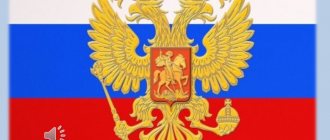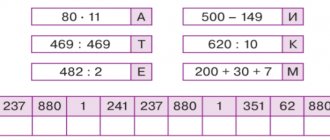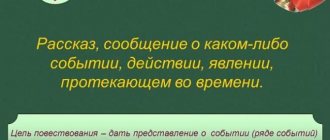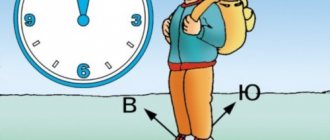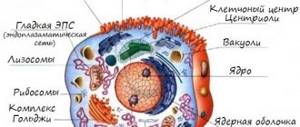Binary lesson in the context of the implementation of a system-activity approach to teaching in primary school
Annotation:
The introduction of the Federal State Educational Standard for Primary General Education sets teachers the task of changing traditional lessons, due to the fact that the learning process should not be aimed at transferring ready-made knowledge, but at mastering a system-based approach to acquiring knowledge. This, in turn, manifests itself in teachers’ creative approach to their professional growth and as a source of motivation for students. Collaboration between teachers can be very productive with such a form of non-traditional lesson as a binary lesson.
Keywords:
integration of music and physical education, binary lesson, singing songs; marching and changing lines to music; participation in creative tasks.
Explanatory note
The binary lesson was developed taking into account the concept of the student-oriented developmental system “School 2100”. When preparing the lesson, the psychological and individual characteristics of 2nd grade students, the level of physical and vocal readiness were taken into account. Specially selected exercises and games, marching songs solved educational, educational and health problems. Educational objectives consisted of teaching basic motor actions (march, running, changing formations) and knowledge of the varieties of marching music, its content - the human experience of moral and aesthetic knowledge of the world. Educational tasks consisted of developing cognitive activity, the ability to analyze, highlight the main thing, generalize and draw conclusions, broaden one’s horizons, and improve communication skills. The health-improving tasks consisted of the sports part of the set of exercises, drill formations in complexity adequate to the age characteristics of 2nd grade students for learning motor actions.
The integration of physical education and music made it possible to include children in practical activities related to the development of the emotional sphere:
- performance of songs: “Strong Friendship” lyrics. M. Plyatskovsky, music. B. Savelyeva “It’s fun to walk together” lyrics. M. Matusovsky, music. V. Shainsky, “Don’t cry, girl” lyrics. V. Kharitonova, music. V. Shainsky; Russian folk song “Soldiers, brave fellows”;
- marching and changing lines to the music: “A coward doesn’t play hockey.” sl. S. Grebennikova and N. Dobronravova, music. A. Pakhmutova, “Counter March” by S. Chernetsky, “Football March” by M. Blanter, “Exit March” by I. O. Dunaevsky;
- participation in creative tasks: “March of the Wooden Soldiers” from “Children’s Album” by P.I. Tchaikovsky, “March from the ballet “The Nutcracker” by P.I. Tchaikovsky; Three variants of D. Kabalevsky's march;
- listening: March of buglers (horn signals), march “Farewell of the Slav” by V. Agapkin.
The planned results of the binary lesson will be:
- Optimization of the educational process of students by changing types of activities, increasing the effectiveness of educational activities by using the physical and vocal readiness of students.
- Creating prerequisites for the formation of a modern holistic view of the surrounding reality.
- Adaptation of students to maintaining health at this stage of training: maintaining correct posture, managing emotions in the process of participating in a binary lesson.
The subject results of mastering a binary lesson, taking into account the specific content of subject areas, including specific academic subjects “Music” and “Physical Education” should reflect:
Music:
- formation of ideas about the role of marching music in human life, its role in the spiritual and moral development of a person;
- development of artistic taste and interest in marching music and related musical activities;
- the ability to perceive marching music and express one’s attitude to the work;
- the use of musical images when creating musical and plastic compositions, performing vocal and choral works, and in improvisation.
Physical Culture:
- formation of ideas about physical culture and health as factors of successful study.
Lesson type : binary. Form of delivery: lesson. The lesson is taught by two teachers.
The semantic emphasis of the content of a binary lesson: reliance on the experience of students, psychological comfort, interest; unity of the emotional and rational (music and sports evoke feelings and awaken thoughts); unity of the general and the individual (this march is all marches); going beyond the boundaries of musical art. When conducting a lesson, teachers use methods: verbal (conversation, story, clarification, explanation); gaming, visual; auditory visualization method; comparison method; method of emotional dramaturgy. Teachers use technologies : personality-oriented learning; educational and gaming activities; pedagogy of cooperation (educational dialogue).
The purpose of the binary lesson:
- create conditions that contribute to increasing the musical and creative activity of students, developing a sense of rhythm through the consolidation of drill formation techniques in marching music;
- going beyond the boundaries of one’s home: from the musical sounds of the house - to the “sounds of the street”, to the marches sounding on the street;
- development in students of attention to the melodies of life beyond the threshold of the house (retrospective connection with 1st grade).
Tasks:
- show march music in the works of domestic composers: P. I. Tchaikovsky, I. O. Dunaevsky, M. Blanter, V. Agapkin, S. Chernetsky, A. Pakhmutova, B. Savelyev, V. Shainsky; D. Kabalevsky;
- help students listen and hear “street music” (parade music, military marches, stadium music).
When conducting a binary lesson, the following are formed:
Cognitive UUD:
- formation of images of various marches through sports movements, formation changes and musical perception;
- 2) a vision of the relationship between music and physical education;
- solving the educational task of identifying the intonation features of marching music, developing a “sense of march” in students;
- comparison of specific features of musical language in works of march music;
- improving the level of song performance, free and smooth singing with movement;
- comparison of the variety of marches with the variety of life situations in which they sound;
- formation of knowledge in physical culture.
Personal UUD:
- developing a sense of pride in one’s Motherland, the Russian people and the history of Russia;
- education of patriotism, love for the Motherland;
- embodiment of the artistic and figurative content of march music in singing, plastic arts, and physical education movements;
- observing the use of marching in a person's life;
- e emotional response to the expressive features of the march;
- the ability to identify the meaning of the march in a person’s life;
- interest in systematic physical education.
Regulatory UUD:
- building a course of solving an educational task involving different types of musical, creative and sports activities;
- solving a specific educational task when performing “March of the Wooden Soldiers” from “Children’s Album” and “March” from the ballet “The Nutcracker” by P. I. Tchaikovsky (perform elements of musical speech using musical-rhythmic movements, conductor’s gesture).
Communication UUD:
- the ability to find reasoned answers to questions in the process of collective reflection on an educational task;
- embodiment of the artistic and figurative content of the march in singing, rhythm, and drill exercises in collective or group co-creation with other students;
- communication and interaction in the process of ensemble, collective (choral and instrumental) embodiment of the artistic image of the march;
- the ability to transfer musical-motor, rhythmic, vocal-choral, drill skills, communication skills in various types of marches.
Equipment: gymnastic benches, soccer balls, rope, cones, whistle, tape recorder, synthesizer, metallophone, drum, tambourine, triangles, bells, wooden spoons.
Venue: small school gym.
To conduct a binary lesson, preliminary work is necessary: students learn marching songs and prepare formation formations. Teachers take into account the level of preparedness and specific characteristics of the class as a whole and individual students.
Handouts: balls, tambourine, drum, wooden spoons, triangles, bells.
Musical sequence: “A coward doesn’t play hockey.” sl. S. Grebennikova and N. Dobronravova, music. A. Pakhmutova (Sport, sport, sport. Songbook. Compiled by O. Ochakovskaya. - M.: All-Union Publishing House "Soviet Composer", 1980 - p. 61.; "Strong Friendship" lyrics by M. Plyatskovsky, music by B. Savelyev; “It’s fun to walk together” lyrics by M. Matusovsky, music by V. Shainsky; “March of the Wooden Soldiers” music by P. I. Tchaikovsky (“Children’s Album”); “March” from the ballet “The Nutcracker” - music by P. by I. Tchaikovsky; “Three Marches” by D. Kabalevsky; Soldiers, brave fellows” Russian folk soldier’s song; “Football March” by music by M. Blanter; “Farewell of a Slav” by music by V. Agapkin; “Exit March” from the film "Circus" - music by I. O. Dunaevsky; "Counter March" by music by S. Chernetsky; "Don't cry, girl" by V. Kharitonov, music by V. Shainsky.
March is one of the main musical genres.
The march is accessible and understandable to everyone who has encountered him repeatedly in their lives. With the help of the march, students will easily and imperceptibly penetrate into any sphere of art, and its connection with life will become obvious and natural to them. The musicological line helps second-graders understand why marching works are so different and how they create this or that artistic image. This line, just like the patriotic one, is realized through specific marching works.
“Immersion” of second-graders into the world of marching music occurs during a binary lesson in various types of musical, creative, and sports activities: singing marching songs, performing marching songs in motion, playing noise musical instruments, listening and thinking about marching music. In accordance with the “immersion” of second-graders into the world of marching music, a process of accumulation of concepts and terms occurs. (March. Musical genre. Musical theatre. Opera. Ballet. Major mode. Song. Verse. Chorus. Chorus. Soloist. Duet. Trio. Quartet. Quintet. Strong beat, weak beat. Rhythm. Musical characteristic). This has an objective impact on the development of interest in marching music: on its expansion, i.e. on the variety of characteristics and concepts with which students operate; to deepen interest, i.e. on the value comprehension of march music; on the sustainability of interest, i.e. duration of impressions from familiar works.
The accumulation of experience in communication of second-graders with marching music, the development of their terminological literacy in an integrated lesson is associated with the language, the genre of the march, rhythmic movements, musical playing, and formation changes. This contributes to the development of musical literacy, i.e. abilities: fluently navigate march music; “on the fly”, without preliminary preparation, after a single acquaintance, “grab” the most significant thing in the work; reflect on marching music.
Binary lesson “Everyone is marching. Formation changes" (music and physical education) performs the function of physical and psycho-emotional recreation, helps relieve the student’s emotional stress, including from physical inactivity in the educational process. In addition, such a lesson ensures the development of moral qualities of the individual and the development of social competencies of students through participation in musical, sports, gaming and physical training.
A binary lesson in the subjects of music and physical education is not aimed at entertainment, but at learning with passion; students learn to reason, work in a team, and find mutual understanding. During such a non-traditional lesson, students receive non-standard tasks, the main distinguishing feature of which is their connection with creative activity and physical activity.
Assessment in a binary lesson is used not only as a resulting tool, but also as a formative one. In such a lesson, grades in the usual sense may not be given.
Recommendations for conducting binary music and physical education lessons:
- binary lessons should be conducted as final lessons in generalizing and consolidating the knowledge, skills and abilities of students;
- A binary lesson must be preceded by careful preparation.
- When conducting a binary lesson in subjects such as music and physical education, teachers create favorable conditions for students’ collective work, to develop the ability to plan their activities and increase interest in learning.
Conclusion: the integration of subjects contributes to the overall development of the child and a deeper study of topics in the lesson, contributes to the formation of a holistic picture of the world in children, and an understanding of the connections between phenomena in nature, society and the world as a whole.
“These different marches” notes from a music lesson in 2nd grade
Music lesson in 2nd grade on the topic “These different marches”
Lesson type:
A lesson in learning new knowledge.
Lesson format:
journey.
Target:
Introduce the genre - march, its varieties. Create conditions that promote increased emotional, musical and creative activity of students, the development of imaginative thinking, a sense of rhythm, and speech through educational activities.
Tasks:
Continue to develop knowledge that music is capable of expressing the feelings, moods of people and their characters through the musical material of the lesson (march music).
Enhance performing and listening culture.
Develop musical-motor, rhythmic and vocal-choral skills, communication skills.
Musical material:
S. Chernetsky “Counter March” – entrance, listening.
March of “Triumphal Victory” - listening, marching movements, rhythmic exercises to music.
M. Blanter “March of Footballers” - listening, rhythmic exercises to music.
March from the ballet “The Nutcracker” by Tchaikovsky (fragment)
P. Tchaikovsky “March of the Wooden Soldiers” – listening, using homemade noise instruments (K. Orff’s technique).
Fragment from the song “Gingerbread Teremok”
Song “Gingerbread Teremok”
Equipment:
Portrait of the composer, diagrams, music library, children's noise instruments “russling”, tables of emotional state, multimedia presentation and video.
During the classes
1. Organizational moment - entrance.
March music sounds by S. Chernetsky “Counter March”
. Children enter the classroom, march in place, and when the music ends, they stop near their seats - chairs.
Musical greeting ( Finger speech game)
Teacher:
I say hello everywhere - At home and on the street, I even say “hello” to the neighbor’s chicken (shows “wings”).
Hello, golden sun!
(shows the “sun”)
Hello, the sky is blue!
(shows “sky”)
Hello, little oak tree!
(shows “oak tree”)
Hello, free breeze!
(shows “breeze”)
Hello, Morning!
(gesture to the right)
Hello, Day!
(gesture to the left)
I should say hello
(puts his hands on his chest)
Don’t be lazy.
(spreads his arms to the sides)
Greeting:
Hello guys. Hello teacher.
Teacher:
What music did you walk into class to? What can you do to this music? Is it comfortable to march to this music?
Children:
Yes!
Teacher:
Today in class we will get acquainted with the genre - march. You will find out what kind of marches there are. Today we will visit an unusual kingdom. I have an invitation from the owner of this kingdom, a wonderful, kind Fairy. In this kingdom they are already waiting for us.
Or maybe some of you know what a march is?
Children:
When they count rhythmically.
Teacher:
A person lives as long as his heart beats. Find your pulse. Pulse is the rhythm of our heart. When you are sick, a doctor comes and he always listens to your pulse, whether there are any irregularities in its rhythm and how often it beats. The pulse has strong and weak lobes.
